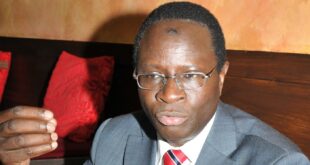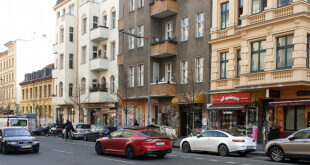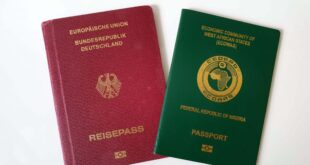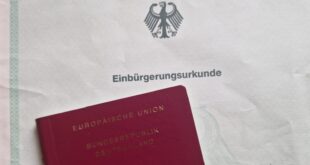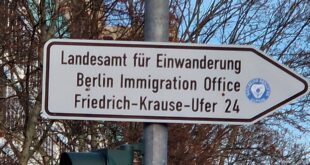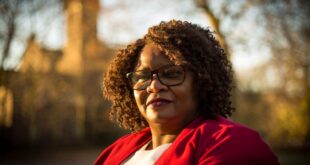Germans head to the polls on 26 September to vote in an election that will determine the successor to Chancellor Angela Merkel. DW breaks down the Bundestag election process.
Germany has a notoriously complex voting system for electing its Bundestag — the lower house of parliament. The system seeks to combine the benefits of both direct and proportional representation while guarding against the electoral mistakes of German history, which saw political fragmentation during the Weimar Republic between WWI and WWII.
Who can vote?
The 2017 parliamentary elections saw a rise in voter turnout to around 70 percent, following a significant drop four years before. The rise of the populist movement drew on non-voters in all democratic states and gave a boost to turnout.
60.4 million people age 18 and above are eligible to vote in the 2021 national election, according to figures from Germany’s Federal Statistics Office.
Of those, 31.2 million are women and 29.2 million are men, with some 2.8 million first-time voters. Over a third of Germany’s electorate are over 60 years old, meaning the older generation often has particular sway over the election outcome.
The largest number of eligible voters live in the most populous western state of North Rhine-Westphalia, followed by the southern states of Bavaria and Baden-Württemberg.
Two votes per ballot
When Germans head to the polls on September 26, they’ll receive a deceptively simple ballot with two choices — one for a district representative and one for a party.
The first vote or “Erststimme” for the district representative, follows a first-past-the-post system like elections in the United States. The voter selects his or her favorite candidate to represent their district in the parliament. Every candidate who wins one of Germany’s 299 constituencies — one constituency for 250,000 inhabitants — is guaranteed a seat. Independent candidates can also run – if they have gathered at least 200 signatures from supporters.
German states with larger populations have more constituencies and get to send more representatives to the Bundestag than the smaller ones.
To fill the other half of the 598 seats in Germany’s Bundestag, voters cast their ballots in the second vote or “Zweitstimme.” This vote goes to a political party instead of a single candidate. It also determines the percentage each political party gets in the Bundestag.
At party conferences the parties draw up lists with candidates for each federal state. Again: States with a larger population get to send more parliamentarians to the Bundestag than smaller ones.
The parties rank their candidates, and only the top few names are printed on the ballots. So while the voter chooses a party, he can not be sure which individuals further down on the party list will make it into the Bundestag.
What makes the elections particularly interesting is that the ballot allows voters to split their vote amongst parties, perhaps voting for their local CDU candidate in the first vote, but casting their ballot for the free-market liberal Free Democrats (FDP) in the second vote, to help the CDU’s traditional small coalition partner to get into parliament.
‘Overhang’ seats
Sometimes, a party will receive more direct parliament seats through the first vote than they deserve according to the party vote. Since each candidate who wins a district is guaranteed a seat, the party gets to maintain those “overhang” seats. It is first and foremost the CDU/CSU which fields a large number of popular and ultimately successful candidates.
Other parties then also get more seats to make up for this, ultimately making the parliament larger than its base number of 598 seats. Due to this, there are currently 709 seats in the Bundestag.
‘The 5 percent hurdle’
In order for a party to enter the Bundestag, it has to win at least 5 percent of the second vote. This system was put in place to prevent smaller splinter parties — like those that bogged down the Weimar Republic in the 1920s — from entering parliament.
The “five percent hurdle” has served to keep the far-right NPD and other extremist parties out of the Bundestag.
Currently, there are six parties represented in the Bundestag: Chancellor Angela Merkel’s center-right CDU and its Bavarian sister-party the Christian Social Union (CSU), the center-left Social Democrats (SPD), the Left Party, the Greens, and the far-right Alternative for Germany (AfD) which emerged as the strongest opposition party in the 2017 vote. Since it was founded in 2013 the party has gathered enough support to have a presence not only in the European Parliament, and in all of Germany’s 16 state parliaments.
Who picks the chancellor?
Unlike the presidential system in the United States, voters in Germany do not directly elect the chancellor, who is the head of the government. The new parliament must convene for the first time no later than one month after the vote.
It can be earlier if coalition talks go swiftly. The top candidate from the party that wins the most votes usually manages to forge a coalition. The president, who is the head of state and plays a largely ceremonial role, then presents this person as candidate for chancellor, who the newly-elected members of parliament then approve in a secret ballot.
© DW
 THE AFRICAN COURIER. Reporting Africa and its Diaspora! The African Courier is an international magazine published in Germany to report on Africa and the Diaspora African experience. The first issue of the bimonthly magazine appeared on the newsstands on 15 February 1998. The African Courier is a communication forum for European-African political, economic and cultural exchanges, and a voice for Africa in Europe.
THE AFRICAN COURIER. Reporting Africa and its Diaspora! The African Courier is an international magazine published in Germany to report on Africa and the Diaspora African experience. The first issue of the bimonthly magazine appeared on the newsstands on 15 February 1998. The African Courier is a communication forum for European-African political, economic and cultural exchanges, and a voice for Africa in Europe.




